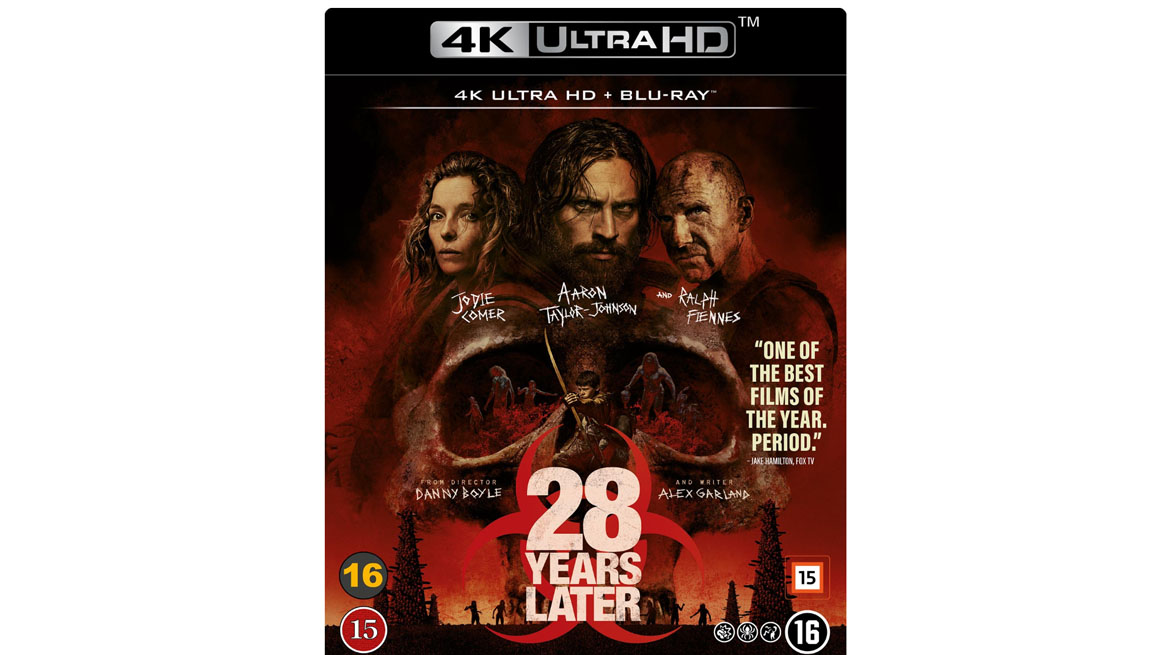TL;DR
28 Years Later throws you back into the rage virus world, 28 years after the original, but with a twist: the UK remains quarantined. The story follows a family facing a grim but stable life, until a ritual gone wrong ignites chaos. While the film recaptures some of the original's tension and features standout performances (especially from Edvin Ryding), it takes an unexpected, more introspective turn later on. Shot on iPhone 15 Pro, the visuals are surprisingly stunning with excellent Dolby Atmos audio. It's a solid, intense watch, even if it deviates from what fans might expect. Dive into the full review to see if this new direction lands for you!
28 Years Later is set, as its title indicates, almost three decades after the outbreak of the “rage” virus depicted in the first and critically acclaimed film, 28 Days Later (2002). This installment explores life within the quarantine zone, establishing that the virus has remained confined to the UK and has not spread globally, contrary to the implication at the conclusion of 28 Weeks Later (2007). The narrative follows Jamie (Aaron Taylor-Johnson), his wife Isla (Jodie Comer), and their son Spike (Alfie Williams). Their existence is challenging, yet they persevere, residing in a village on a secluded island. A pivotal moment arrives when Spike embarks on a coming-of-age ritual with his father, inadvertently triggering a series of unforeseen events.
The original film in the series holds a strong appeal, lauded for its tension and groundbreaking elements within the genre. Shot with camcorders, it presented a distinctive visual aesthetic that, while raw, effectively sustained a high level of suspense. The sequel, 28 Weeks Later, adopted a more expansive and action-driven approach; though it lacked the intense tension of its predecessor, it remained a compelling watch. A subsequent installment, 28 Months Later, was planned but ultimately shelved due to protracted development. Consequently, the production of 28 Years Later was announced, with Danny Boyle returning as director.
Expectations for this film were considerably high, and to a significant extent, they were met. The movie effectively reestablishes a palpable sense of tension, immediately immersing the audience in a high-stakes narrative from its opening scene. The setup for the coming-of-age ritual is both well-crafted and engaging. However, a thematic shift occurs thereafter, transforming the film into a markedly different, more introspective cinematic experience. While the film features several masterful acting performances and certainly exciting sequences, this shift creates a somewhat bifurcated viewing experience. Additionally, some character decisions and reactions occasionally strain credibility, detracting from the overall coherence. Notably, Edvin Ryding (Avgrunden) delivers a significant performance in a smaller role. Alex Garland (Civil War) penned the screenplay; while the film may diverge from initial expectations, it is competently written and largely engaging, yet it prompts contemplation on the chosen narrative trajectory for the franchise.
The UHD edition is presented in 2160p with HEVC/H.265 encoding, mastered in both Dolby Vision and HDR10. In a notable departure from the original’s camcorder aesthetic, this installment was filmed using the iPhone 15 Pro. The visual presentation is remarkably impressive, particularly considering the inherent limitations of smartphone cinematography—even with supplementary lenses and stabilization—compared to professional-grade equipment. The picture quality is exceptionally sharp, benefiting from a direct digital-to-digital transfer that ensures pristine clarity.
The audio is delivered in Dolby Atmos, providing an exceptionally immersive experience, especially during high-action sequences. A particularly notable sequence, depicting a pursuit across water, generates a palpable sense of dread. Dialogue remains clear and precisely balanced within the broader soundscape.
The bonus materials offer insightful perspectives, primarily focusing on the production methodologies and the film’s distinctive visual style. A notable omission, however, is the absence of a commentary track.
In conclusion, 28 Years Later warrants a recommendation; irrespective of individual thematic preferences, it provides nearly two hours of intense entertainment. While it may deviate from fan expectations, it serves as a compelling new chapter, with the sequel, 28 Years Later: The Bone Temple, already slated for release next year.
SF Studios provided review copies for this evaluation. Material providers have no editorial influence on our reviews; we consistently maintain independent critical judgment, prioritizing our readers and consumers.

